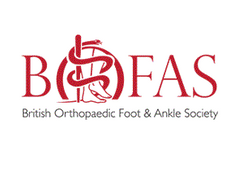BOAST - The Management of Ankle Fractures


Date Published: August 2016
Last Updated: August 2016
Background and justification
Ankle fractures are common and the majority are the result of low energy torsional trauma. The aim of treatment is to restore and maintain stability and alignment of the joint, ideally with normal anatomy of the ankle mortise. This should optimise functional recovery and reduce the chance of development of post-traumatic arthritis.
Inclusions
Closed malleolar and syndesmotic ankle injuries in skeletally mature patients.
Exclusions
Pilon fractures, open ankle fractures, ankle fractures in skeletally immature patients.
Standards for Practice
- The mechanism of injury and clinical findings, including skin integrity, assessment of circulation and sensation, should be precisely documented at presentation.
- Comorbidities that might influence treatment choice and outcome should be documented. These might include pre-existing mobility impairment, diabetes mellitus, peripheral neuropathy, peripheral vascular disease, osteoporosis, renal disease, smoking and alcohol abuse.
- Reduction and splinting should be performed urgently for clinically deformed ankles. Radiographs should be obtained before reduction unless this will cause an unacceptable delay.
- Radiographs should be centred on the ankle and should include a true lateral and a mortise view.
- Additional radiographs of the whole leg are required when clinical examination suggests a more proximal fracture of the fibula (Maisonneuve injury). Separate radiographs of the foot and knee should be obtained if clinically indicated. CT imaging may be helpful in defining fracture configuration in more complex patterns particularly where the posterior malleolus is involved.
- Following reduction, neurovascular examination must be repeated and documented.
- Adequate reduction must be confirmed by review of repeat radiographs and documented before transfer from ED.
- Fractures considered stable should be treated with analgesia, splinting and patients allowed to bear weight as tolerated. Further follow-up may not be necessary.
- In fracture patterns where stability is uncertain, patients should be reviewed within 2 weeks with further radiographs (weight bearing if possible) to confirm the position remains acceptable.
- Early fixation (on the day or day after injury) is recommended in the majority of patients under 60 years when the ankle mortise is unstable. The use of external fixation may be rarely indicated in the presence of gross instability associated with soft tissue compromise.
- In patients over 60 years close contact casts are an option if reduction can be maintained.
- Surgery should aim to achieve reduction and stabilisation of the ankle mortise. The syndesmosis should then be assessed and stabilised if unstable. Intra-operative radiographs should be obtained to confirm reduction.
- Most patients should be allowed to bear weight as tolerated in a splint or cast unless there are specific concerns regarding the stability of the fixation or contraindications, such as peripheral neuropathy or particular concerns about the status of the soft tissues.
- After surgery patients should be followed up in fracture clinic within 6 weeks of surgery to detect complications and confirm maintenance of reduction on radiographs.
- Thromboprophylaxis risk assessment should follow agreed local protocols.
- All patients should receive information regarding expected functional recovery and rehabilitation including advice about return to normal activities such as work and driving. A mechanism should be in place for patients to self refer to the fracture service if progress is not as anticipated.
Evidence base
http://www.nice.org.uk/guidance/ng38
Including reviews and an evolved professional consensus.
